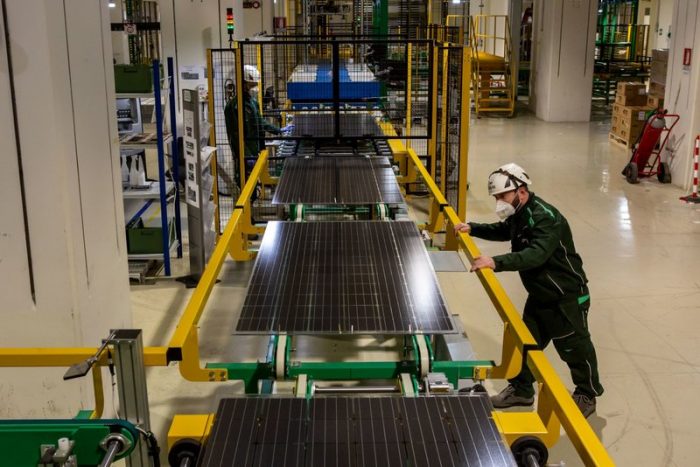
The U.S. solar PV manufacturing announcements keep rolling in — and this time solar cells are involved. Enel North America, through its affiliate 3Sun USA, LLC, says it intends to build an industrial-scale PV module production facility in the United States. The proposed facility is expected to have a minimum production capacity of 3 GW with the possibility to scale production to 6 GW annually and will be among the first in the United States to revive solar cells production in the country.
“Recent policy tailwinds from the Inflation Reduction Act have served as a catalyst for our solar manufacturing ambitions in the US, ushering in a new era of made-in-America energy,” said Enrico Viale, head of Enel North America. “With this announcement, it is our intention to bolster a robust domestic solar supply chain that accelerates and strengthens the US’s transition to clean energy. In doing so, we are creating thousands of new jobs, supporting local economies and providing stability to the solar industry.”
Currently, Enel is evaluating possible sites for the new factory and expects to begin construction in mid-2023. It’s anticipated that the first panels will be available to the market by the end of 2024 and that 1,500 new jobs will be created by 2025.
Enel will leverage its expertise and experience from its 3Sun Gigafactory in Catania, Italy, which is set to become Europe’s largest factory producing high-performance bifacial photovoltaic modules. Enel intends to replicate the Gigafactory factory in the US to produce bifacial heterojunction (B-HJT) PV cells that capture more sunlight as the cells can respond to light on both front and rear surfaces.
Fewer than five large-scale solar module manufacturing facilities (over 1 GW) are currently operating in the US, while annual US solar PV installations are projected to grow from 16 GW in 2022 to 41 GW by the end of 2025, according to Wood Mackenzie.
3Sun technology
3Sun is known for high-efficiency cells, achieving 24.63% efficiency back in 2020. Through an ambitious R&D program, the PV panels will be further developed to also incorporate a tandem structure, which utilizes two stacked cells that allows for more light to be captured compared to single-cell structures, yielding higher overall cell efficiency.
The combination of bifacial PV panels and tandem cell structure offers significant efficiency improvements, which will enable PV modules to exceed 30% efficiency, securing higher average energy production. The technology’s lower degradation ensures a longer useful life for modules, and the cells’ high density is conducive to a variety of applications, including land-constrained utility-scale installations or rooftops.
— Solar Builder magazine
Leave a Reply
You must be logged in to post a comment.